Effects of Carbon Nanotubes on Mechanical Strength, Damage Process, and Microstructure of Lithium Tailing Backfilling
Abstract
:1. Introduction
2. Materials and Methods
2.1. Materials
2.1.1. Tailings and Cement
2.1.2. Carbon Nanotube Characterization
2.2. Preparation of CLTB Specimens
2.3. Uniaxial Compressive Strength Tests
2.4. FTIR Analysis
2.5. Scanning Electron Microscopy
3. Results and Discussion
3.1. Mechanical Properties of CNT-Reinforced CLTB Specimens
3.2. Stress-Strain Properties of CNT-Reinforced Specimens and the CLTB Specimen Damage Process
- (1)
- In the pore compaction stage, there are certain pores and cracks in the cemented fill body, and the tiny pores inside the fill are gradually compacted under the action of loading. The pore compaction stage of the CLTB specimen containing carbon nanotubes is significantly shorter than that of the ordinary backfill specimen. There is no damage at this stage, and the curve at this stage is characterized by a concave shape.
- (2)
- Damage stable development stage: During this process, the CLTB exhibits linear elastic deformation, indicating that the damage value of the test block begins to increase. The damage processes of the CLTB specimens with the addition of CNTs during this stage are consistent with those of the ordinary CLTB specimens. In this process, the damage value increases linearly, and subtle cracks can be observed on the surface.
- (3)
- Damage acceleration stage: The load of the CLTB exceeds the elastic limit and changes from elastic deformation to plastic deformation. This stage occurs before the peak of the curve, at which point the CLTB specimen begins to break. The damage to the test block accelerates, the stress curve becomes convex, the inside of the sample begins to reach the stress limit, and the fine cracks observed in the second stage begin to accelerate, expand, and become obvious.
- (4)
- Damage failure stage: In the post-peak failure phase, with increasing stress, the cracks in the CLTB specimen continue to expand and extend until the CLTB specimen is destroyed. The CLTB specimen is fully destroyed under uniaxial pressure, and obvious Y-type cracks and block detachments appear on the surface of the CLTB specimen.
- (1)
- As mentioned in Section 2.2, the dispersion effect of CNTs affects the strength of the filler. A high concentration of 0.25% CNTs is difficult to completely disperse, and many CNTs are entangled and agglomerated, forming interfacial defects and stress concentrations in the CLTB specimen, which can be observed via electron microscopy analyses.
- (2)
- The addition of the PVP activator produces many bubbles in aqueous solution, which input additional gases into the cementitious body during the mixing process, thereby increasing the porosity and decreasing the strength.
3.3. FTIR Analysis
3.4. Microstructures of CNT-Reinforced CLTB Specimens
4. Conclusions
- (1)
- CNTPL and CNTCOOH were enhanced well when the CNT content was less than 0.2%, and CNTCOOH with good dispersion enhanced samples better when the CNT content was greater than 0.2%. When the cement tailings ratio was 1:8, the UCS test strength of 0.02% CNTPL-enhanced and 0.02% cement-enhanced CLTB samples were 1.12 MPa and 1.25 MPa, respectively. Compared with ordinary CLTB samples, 0.02% CNTPL and 0.02% CLTB samples were 75% and 95.3%, respectively; these results show that the addition of appropriate CNTs can significantly increase the packing strength. The stress-change curve and damage process analysis show that CNT can only play a role at the microscopic level due to its small size, so it does not change the damage stage of CLTB but optimizes the damage process and slows down the rapid accumulation of damage values.
- (2)
- According to FTIR and SEM, CNT has nano-nucleation, bridging, and filling to form a network skeleton of carbon nanotube hydration products, which effectively improves the mechanical properties of CLTB samples and inhibits the development of micro-cracks.
Author Contributions
Funding
Institutional Review Board Statement
Informed Consent Statement
Data Availability Statement
Conflicts of Interest
References
- Elshkaki, A.; Graedel, T.E.; Ciacci, L.; Reck, B.K. Copper demand, supply, and associated energy use to 2050. Glob. Environ. Change 2016, 39, 305–315. [Google Scholar] [CrossRef]
- Tayebi-Khorami, M.; Edraki, M.; Corder, G.; Golev, A. Re-Thinking Mining Waste through an Integrative Approach Led by Circular Economy Aspirations. Minerals 2019, 9, 286. [Google Scholar] [CrossRef]
- Norgate, T.; Haque, N. Energy and greenhouse gas impacts of mining and mineral processing operations. J. Clean. Prod. 2010, 18, 266–274. [Google Scholar] [CrossRef]
- Sheoran, A.S.; Sheoran, V. Heavy metal removal mechanism of acid mine drainage in wetlands: A critical review. Miner. Eng. 2006, 19, 105–116. [Google Scholar] [CrossRef]
- Sun, W.; Wang, H.; Hou, K. Control of waste rock-tailings paste backfill for active mining subsidence areas. J. Clean. Prod. 2018, 171, 567–579. [Google Scholar] [CrossRef]
- Qi, C.; Fourie, A. Cemented paste backfill for mineral tailings management: Review and future perspectives. Miner. Eng. 2019, 144, 106025. [Google Scholar] [CrossRef]
- Qi, C.; Fourie, A.; Chen, Q.; Zhang, Q. A strength prediction model using artificial intelligence for recycling waste tailings as cemented paste backfill. J. Clean. Prod. 2018, 183, 566–578. [Google Scholar] [CrossRef]
- Sivakugan, N.; Rankine, R.M.; Rankine, K.J.; Rankine, K.S. Geotechnical considerations in mine backfilling in Australia. J. Clean. Prod. 2006, 14, 1168–1175. [Google Scholar] [CrossRef]
- Chen, Q.-S.; Sun, S.-Y.; Liu, Y.-K.; Qi, C.-C.; Zhou, H.-B.; Zhang, Q.-L. Immobilization and Leaching Characteristics of Fluoride from Phosphogypsum-Based Cemented Paste Backfill. Int. J. Miner. Metall. Mater. 2021, 28, 1440–1452. [Google Scholar] [CrossRef]
- Chen, Q.; Zhang, Q.; Fourie, A.; Xin, C. Utilization of Phosphogypsum and Phosphate Tailings for Cemented Paste Backfill. J. Environ. Manag. 2017, 201, 19–27. [Google Scholar] [CrossRef]
- Chen, Q.; Tao, Y.; Zhang, Q.; Qi, C. The Rheological, Mechanical and Heavy Metal Leaching Properties of Cemented Paste Backfill under the Influence of Anionic Polyacrylamide. Chemosphere 2022, 286, 131630. [Google Scholar] [CrossRef] [PubMed]
- Fall, M.; Benzaazoua, M.; Saa, E.G. Mix Proportioning of Underground Cemented Tailings Backfill. Tunn. Undergr. Space Technol. 2007, 23, 80–90. [Google Scholar] [CrossRef]
- Chen, Q.; Tao, Y.; Feng, Y.; Zhang, Q.; Liu, Y. Utilization of Modified Copper Slag Activated by Na2SO4 and CaO for Unclassified Lead/Zinc Mine Tailings Based Cemented Paste Backfill. J. Environ. Manag. 2021, 290, 112608. [Google Scholar] [CrossRef] [PubMed]
- Guo, Z.; Qiu, J.; Pel, L.; Zhao, Y.; Zhu, Q.; Kwek, J.W.; Zhang, L.; Jiang, H.; Yang, J.; Qu, Z. A contribution to understanding the rheological measurement, yielding mechanism and structural evolution of fresh cemented paste backfill. Cem. Concr. Compos. 2023, 143, 105221. [Google Scholar] [CrossRef]
- Sengani, F.; Zvarivadza, T.; Netshithuthuni, R. Evaluating the Strength and Performance of Backfill Support in Deep Level Gold Mines. Int. J. Georesources Environ. 2018, 4, 163–168. [Google Scholar] [CrossRef]
- Skrzypkowski, K. Comparative Analysis of the Mining Cribs Models Filled with Gangue. Energies 2020, 13, 5290. [Google Scholar] [CrossRef]
- Mashoene, K.; Zvarivadza, T. Backfill Composition Effects on Backfill Optimisation in Massive Mining. In Proceedings of the 50th U.S. Rock Mechanics/Geomechanics Symposium, Houston, TX, USA, 26–29 June 2016. [Google Scholar]
- Fang, K.; Yang, J.; Wang, Y. Comparison of the Mode I Fracture Toughness of Different Cemented Paste Backfill-Related Structures: Effects of Mixing Recipe. Eng. Fract. Mech. 2022, 270, 108579. [Google Scholar] [CrossRef]
- Yang, L.; Hou, C.; Zhu, W.; Liu, X.; Yan, B.; Li, L. Monitoring the Failure Process of Cemented Paste Backfill at Different Curing Times by Using a Digital Image Correlation Technique. Constr. Build. Mater. 2022, 346, 128487. [Google Scholar] [CrossRef]
- Guner, N.U.; Yilmaz, E.; Sari, M.; Kasap, T. Cementitious backfill with partial replacement of Cu-rich mine tailings by sand: Rheological, mechanical and microstructural properties. Minerals 2023, 13, 437. [Google Scholar] [CrossRef]
- Huang, Z.; Cao, S.; Yilmaz, E. Investigation on the Flexural Strength, Failure Pattern and Microstructural Characteristics of Combined Fibers Reinforced Cemented Tailings Backfill. Constr. Build. Mater. 2021, 300, 124005. [Google Scholar] [CrossRef]
- Xue, G.; Yilmaz, E.; Feng, G.; Cao, S.; Sun, L. Reinforcement Effect of Polypropylene Fiber on Dynamic Properties of Cemented Tailings Backfill under SHPB Impact Loading. Constr. Build. Mater. 2021, 279, 122417. [Google Scholar] [CrossRef]
- Jin, J.; Li, C.; Yuan, S.; Sun, Q.; Yang, H. Effect of Fiber on Early Strength and Interface Stiffness of Cemented Tailings Backfill. Mater. Res. Express 2022, 9, 045202. [Google Scholar] [CrossRef]
- Xue, G.; Yilmaz, E.; Song, W.; Cao, S. Fiber Length Effect on Strength Properties of Polypropylene Fiber Reinforced Cemented Tailings Backfill Specimens with Different Sizes. Constr. Build. Mater. 2020, 241, 118113. [Google Scholar] [CrossRef]
- Xue, G.; Yilmaz, E.; Song, W.; Cao, S. Mechanical, Flexural and Microstructural Properties of Cement-Tailings Matrix Composites: Effects of Fiber Type and Dosage. Compos. Part B Eng. 2019, 172, 131–142. [Google Scholar] [CrossRef]
- Liu, L.; Zhu, C.; Qi, C.; Wang, M.; Huan, C.; Zhang, B.; Song, K.-I. Effects of curing time and ice-to-water ratio on performance of cemented paste backfill containing ice slag. Constr. Build. Mater. 2019, 228, 116639. [Google Scholar] [CrossRef]
- Kesimal, A.; Yilmaz, E.; Ercikdi, B.; Alp, I.; Deveci, H. Effect of properties of tailings and binder on the short-and long-term strength and stability of cemented paste backfill. Mater. Lett. 2005, 59, 3703–3709. [Google Scholar] [CrossRef]
- Sarvandani, M.M.; Mahdikhani, M.; Aghabarati, H.; Fatmehsari, M.H. Effect of Functionalized Multi-Walled Carbon Nanotubes on Mechanical Properties and Durability of Cement Mortars. J. Build. Eng. 2021, 41, 102407. [Google Scholar] [CrossRef]
- Konsta-Gdoutos, M.S.; Metaxa, Z.S.; Shah, S.P. Highly Dispersed Carbon Nanotube Reinforced Cement Based Materials. Cem. Concr. Res. 2010, 40, 1052–1059. [Google Scholar] [CrossRef]
- Hawreen, A.; Bogas, J.A. Influence of Carbon Nanotubes on Steel–Concrete Bond Strength. Mater. Struct. 2018, 51, 155. [Google Scholar] [CrossRef]
- Alafogianni, P.; Dassios, K.; Tsakiroglou, C.D.; Matikas, T.E.; Barkoula, N.M. Effect of CNT addition and dispersive agents on the transport properties and microstructure of cement mortars. Constr. Build. Mater. 2018, 197, 251–261. [Google Scholar] [CrossRef]
- Li, F.; Liu, L.; Yang, Z.; Li, S. Physical and mechanical properties and micro characteristics of fly ash-based geopolymer paste incorporated with waste Granulated Blast Furnace Slag (GBFS) and functionalized Multi-Walled Carbon Nanotubes (MWCNT). J. Hazard. Mater. 2021, 401, 123339. [Google Scholar] [CrossRef] [PubMed]
- Cui, X.; Han, B.; Zheng, Q.; Yu, X.; Dong, S.; Zhang, L.; Ou, J. Mechanical properties and reinforcing mechanisms of cementitious composites with different types of multiwalled carbon nanotubes. Compos. Part A Appl. Sci. Manuf. 2017, 103, 131–147. [Google Scholar] [CrossRef]
- Rashad, A.M. Effect of carbon nanotubes (CNT) on the properties of traditional cementitious materials. Constr. Build. Mater. 2017, 153, 81–101. [Google Scholar] [CrossRef]
- Silvestro, L.; Gleize, P.J.P. Effect of Carbon Nanotubes on Compressive, Flexural and Tensile Strengths of Portland Cement-Based Materials: A Systematic Literature Review. Constr. Build. Mater. 2020, 264, 120237. [Google Scholar] [CrossRef]
- Barati Farimani, A.; Aluru, N.R. Spatial diffusion of water in carbon nanotubes: From fickian to ballistic motion. J. Phys. Chem. B 2011, 115, 12145–12149. [Google Scholar] [CrossRef] [PubMed]
- Zvarivadza, T. Sustainability in the mining industry: An evaluation of the National Planning Commission’s diagnostic overview. Resour. Policy 2018, 56, 70–77. [Google Scholar] [CrossRef]
- Onifade, M.; Zvarivadza, T.; Adebisi, J.A.; Said, K.O.; Dayo-Olupona, O.; Lawal, A.I.; Khandelwal, M. Advancing toward sustainability: The emergence of green mining technologies and practices. Green Smart Min. Eng. 2024, 1, 157–174. [Google Scholar] [CrossRef]
- Jiang, Y.; Song, H.; Xu, R. Research on the dispersion of carbon nanotubes by ultrasonic oscillation, surfactant and centrifugation respectively and fiscal policies for its industrial development. Ultrason. Sonochem. 2018, 48, 30–38. [Google Scholar] [CrossRef]
- GB/T 39489-2020; Technical Specification for the Total Tailings Paste Backfill. GB Standard: Shenzhen, China, 2020.
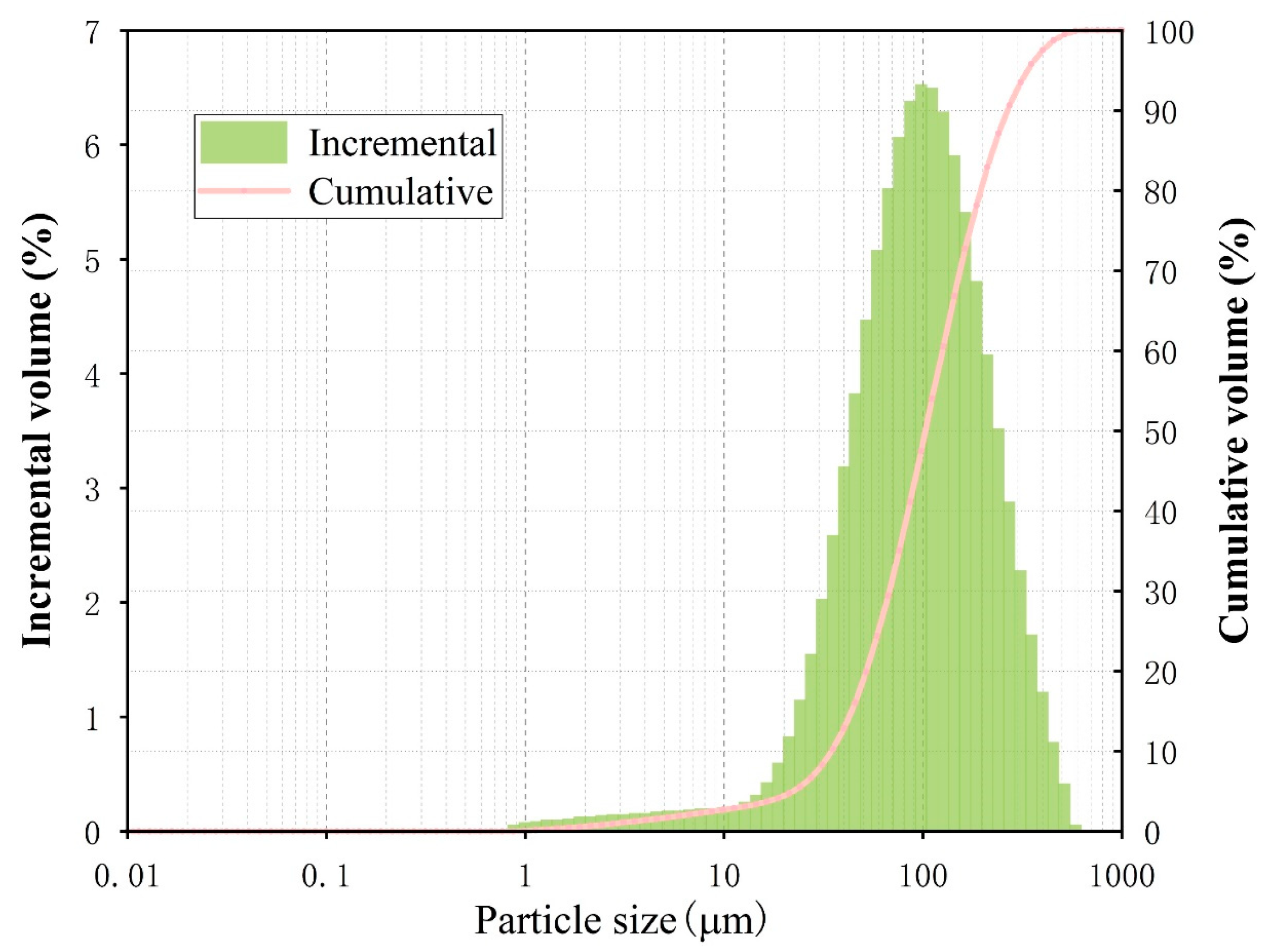
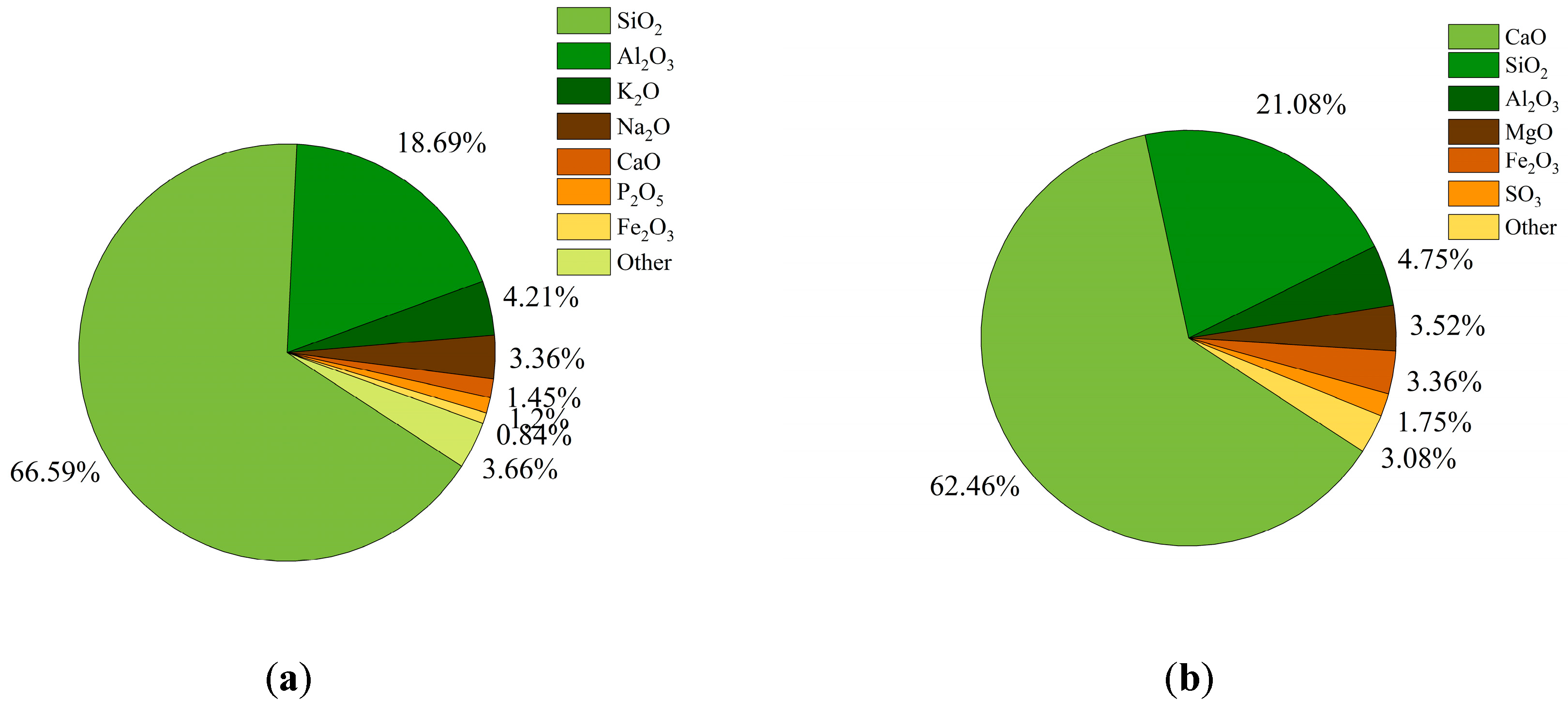

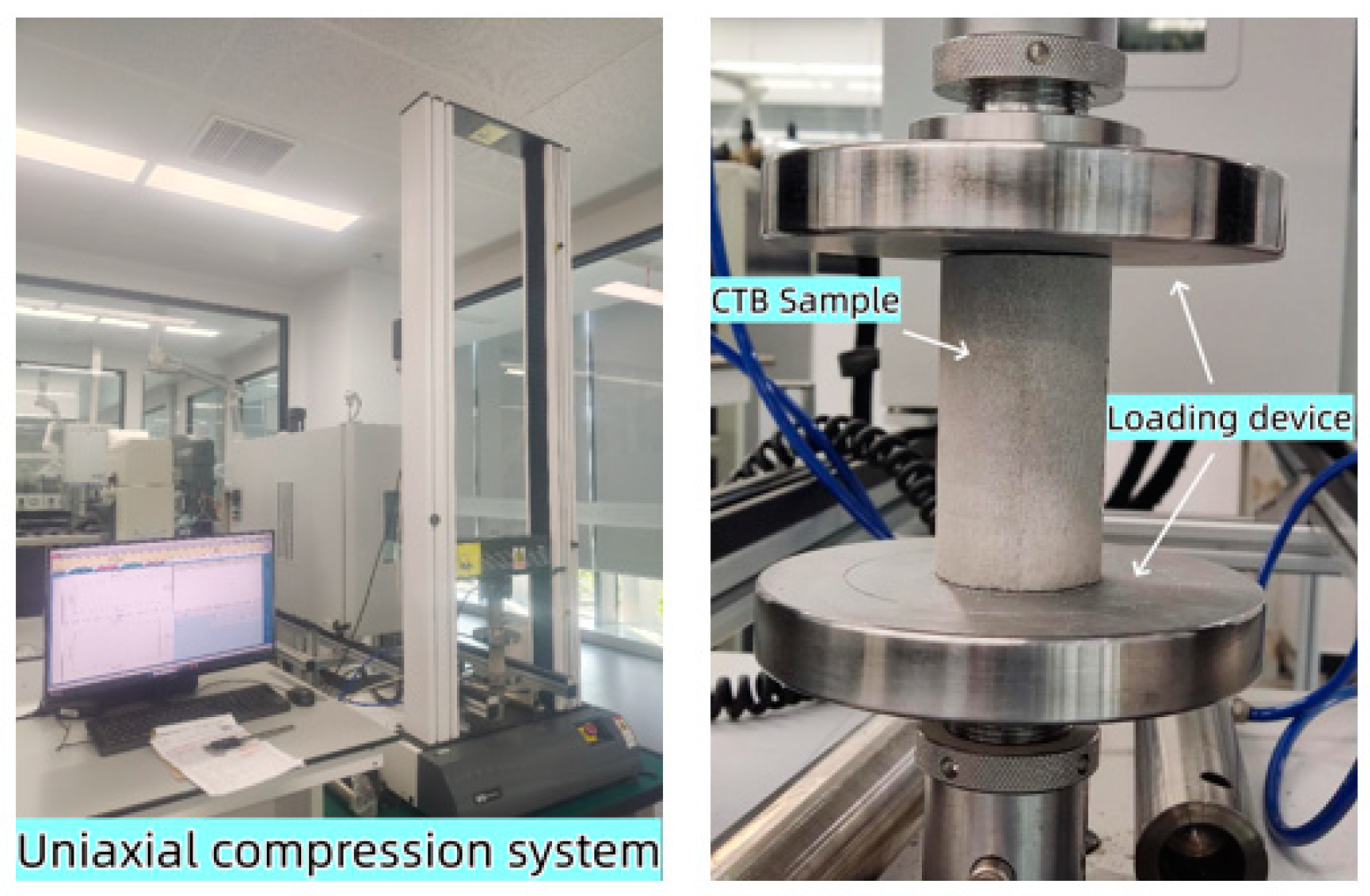

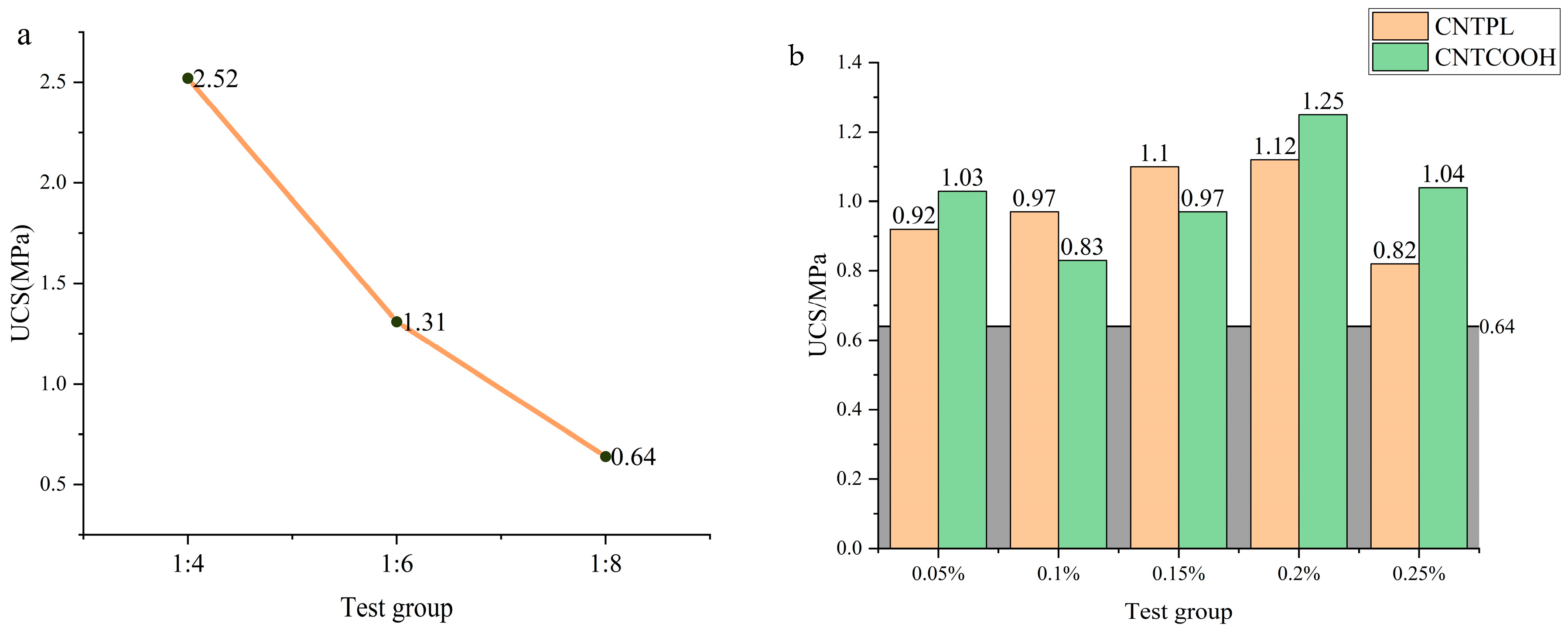

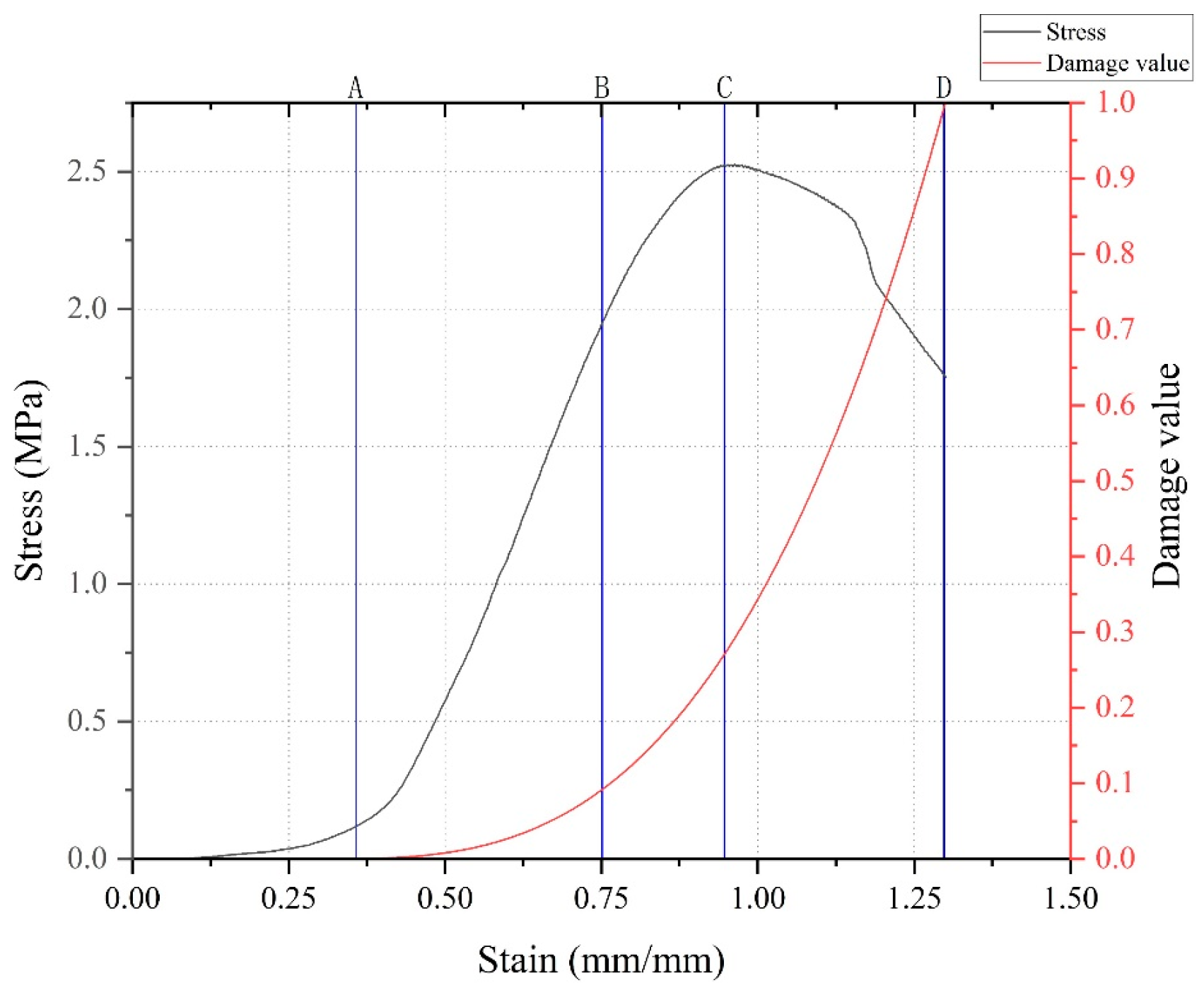


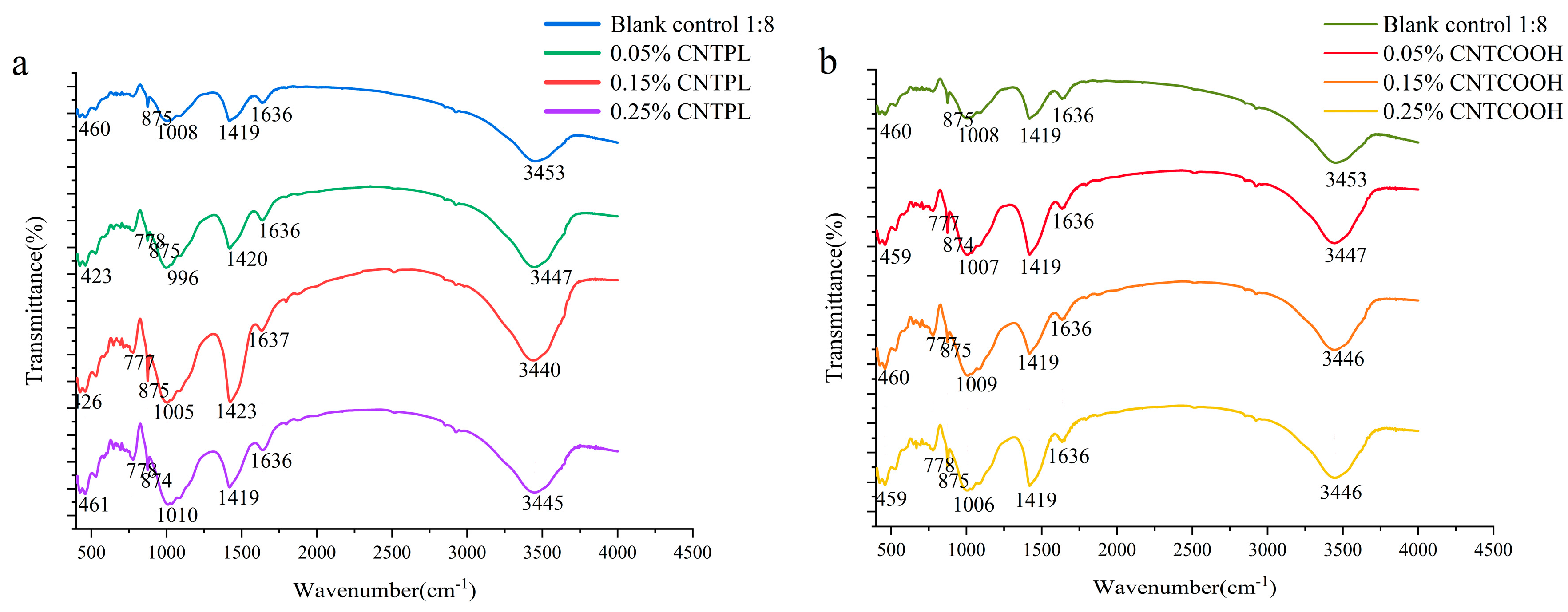
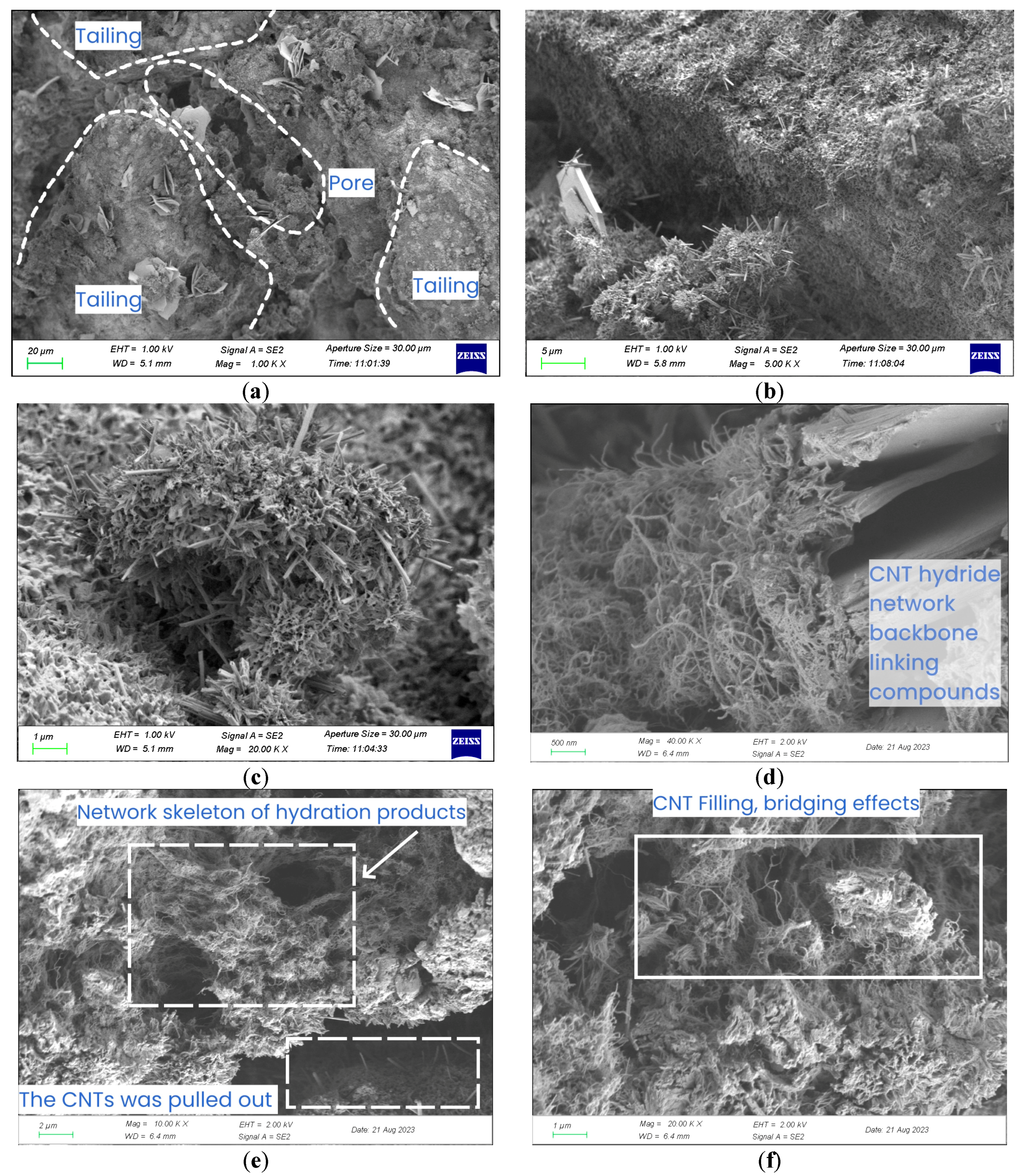
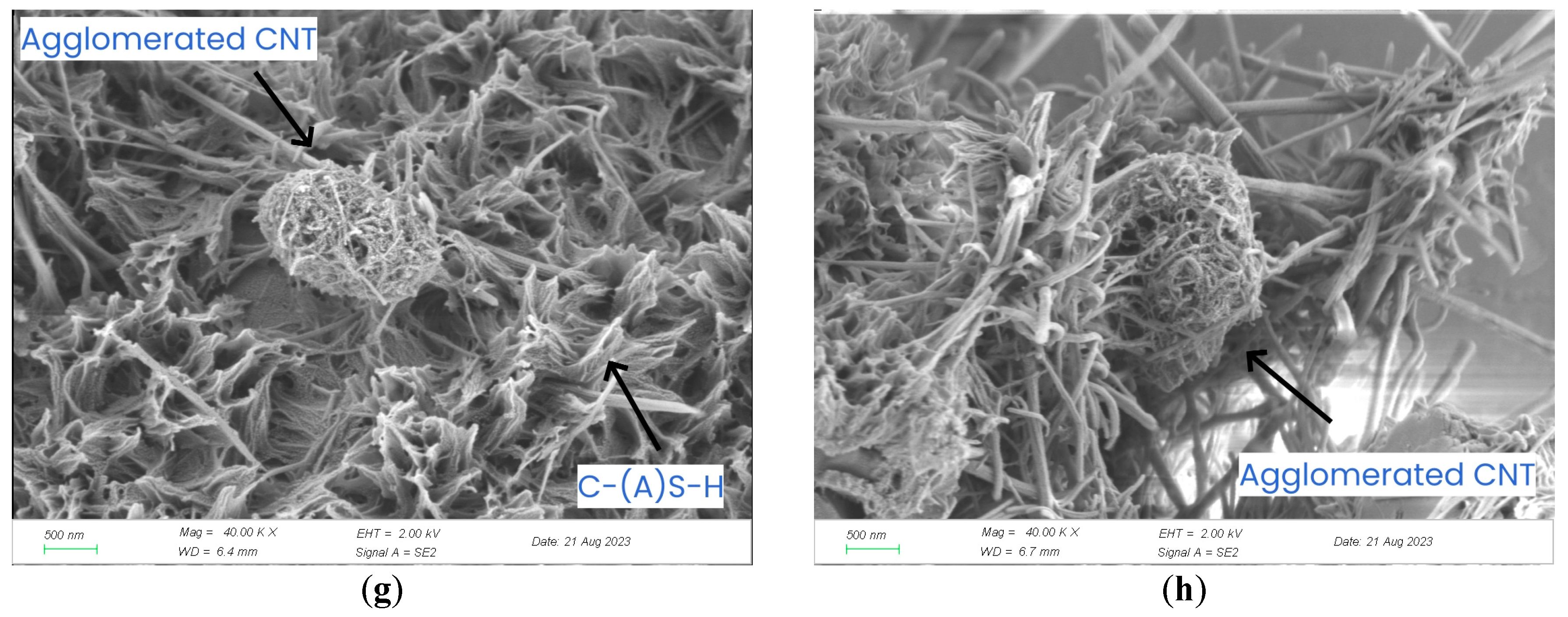
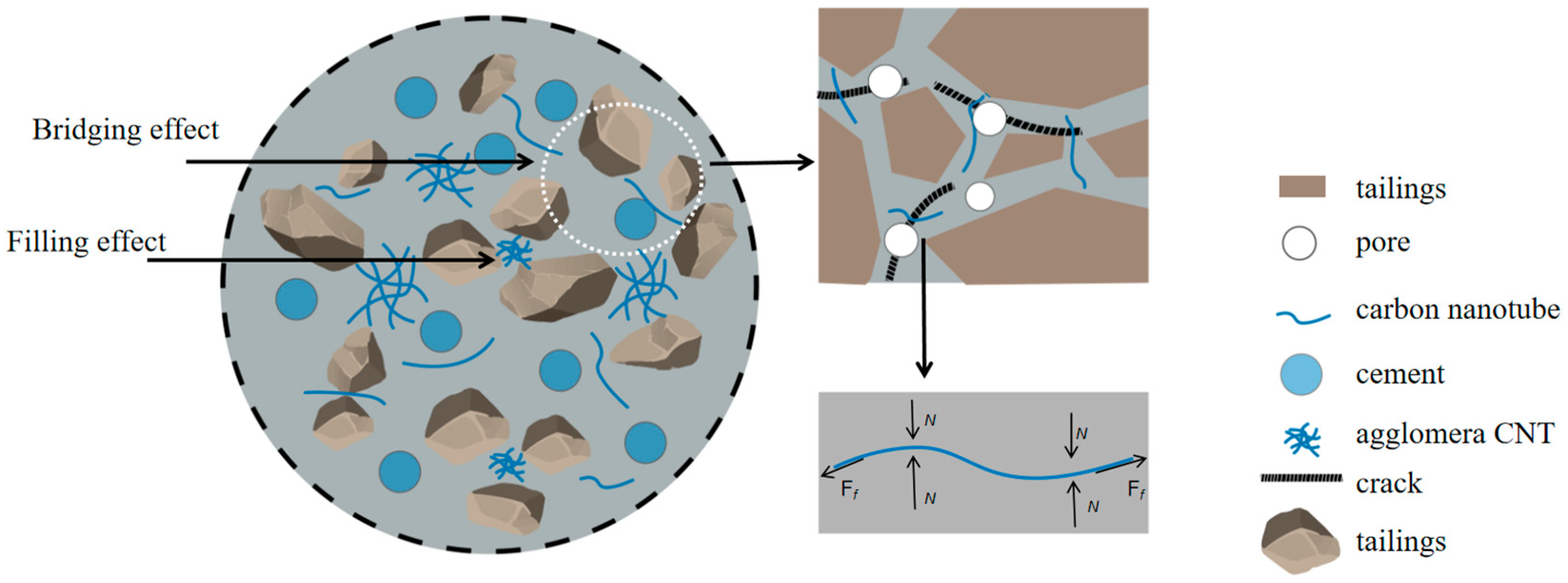
| Type | Length (μm) | Outer Diameter (nm) | Inner Diameter (nm) | Density (g/cm3) | Purity (wt.%) |
|---|---|---|---|---|---|
| CNTPL | 3–12 | 8–15 | 3–5 | 0.08 | >95 |
| CNTCOOH | 2–8 | 10–15 | 5–8 | 0.10 | >95 |
| Samples | Cement-Tailing Ratio | CNTPL (wt.%) | CNTCOOH (wt.%) | Slurry Concentration Ratio (W) |
|---|---|---|---|---|
| CLTB-1 | 1:4 | 0.7 | ||
| CLTB-2 | 1:6 | 0.7 | ||
| CLTB-3 | 1:8 | 0.7 | ||
| R-CLTB-1 | 1:8 | 0.05 | 0.7 | |
| R-CLTB-2 | 1:8 | 0.1 | 0.7 | |
| R-CLTB-3 | 1:8 | 0.15 | 0.7 | |
| R-CLTB-4 | 1:8 | 0.2 | 0.7 | |
| R-CLTB-5 | 1:8 | 0.25 | 0.7 | |
| R-CLTB-6 | 1:8 | 0.05 | 0.7 | |
| R-CLTB-7 | 1:8 | 0.1 | 0.7 | |
| R-CLTB-8 | 1:8 | 0.15 | 0.7 | |
| R-CLTB-9 | 1:8 | 0.2 | 0.7 | |
| R-CLTB-10 | 1:8 | 0.25 | 0.7 |
Disclaimer/Publisher’s Note: The statements, opinions and data contained in all publications are solely those of the individual author(s) and contributor(s) and not of MDPI and/or the editor(s). MDPI and/or the editor(s) disclaim responsibility for any injury to people or property resulting from any ideas, methods, instructions or products referred to in the content. |
© 2024 by the authors. Licensee MDPI, Basel, Switzerland. This article is an open access article distributed under the terms and conditions of the Creative Commons Attribution (CC BY) license (https://creativecommons.org/licenses/by/4.0/).
Share and Cite
Hu, S.; Guan, H.; Wu, C.; Lu, Y.; Zhu, D. Effects of Carbon Nanotubes on Mechanical Strength, Damage Process, and Microstructure of Lithium Tailing Backfilling. Materials 2024, 17, 3885. https://doi.org/10.3390/ma17163885
Hu S, Guan H, Wu C, Lu Y, Zhu D. Effects of Carbon Nanotubes on Mechanical Strength, Damage Process, and Microstructure of Lithium Tailing Backfilling. Materials. 2024; 17(16):3885. https://doi.org/10.3390/ma17163885
Chicago/Turabian StyleHu, Shufen, Huadong Guan, Cai Wu, Yani Lu, and Daopei Zhu. 2024. "Effects of Carbon Nanotubes on Mechanical Strength, Damage Process, and Microstructure of Lithium Tailing Backfilling" Materials 17, no. 16: 3885. https://doi.org/10.3390/ma17163885






